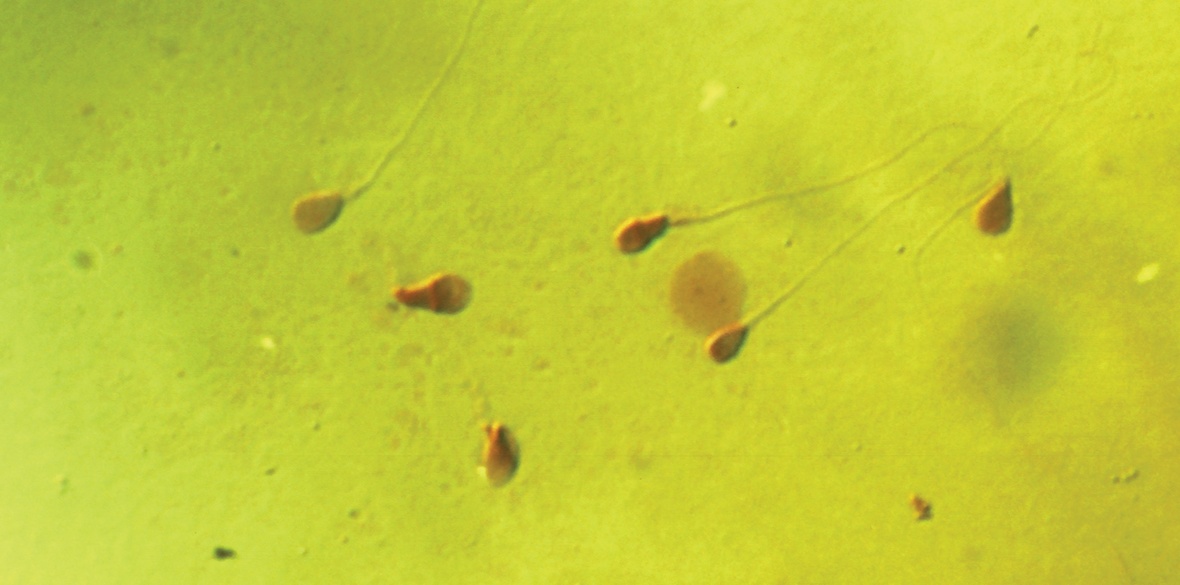This is the last article you can read this month
You can read more article this month
You can read more articles this month
Sorry your limit is up for this month
Reset on:
Please help support the Morning Star by subscribing here
IS it men who are to be the harbingers of the end of humanity as we know it? Before any readers hurry to email me saying I should have started that question “is it women and men who...” sorry you are premature (a word for reasons that will become clear I shall try to avoid in the rest of this article).
It is men only who are causing a potential disaster for the whole of the human species, although women and particularly babies — some as yet unborn — are certainly going to suffer too.
Quite simply, all across the world human male testicular equipment is falling down on the job and failing to produce enough live, fast swimming, go-for-it-lad sperm.
Or, not to put too fine point on it, there is a world shortage (including here in Britain) of men’s sperm.
In fact global figures suggest sperm concentration has halved in 40 years – and the rate of decline is getting faster and faster.
A new report has declared that we humans could face reproductive crisis because human sperm counts are declining everywhere.
Unless something can be done we could all face a decreasing population crisis. Now I know overpopulation has been a worry too, I’ve even written about it, but researchers are warning that the rate of decline is actually accelerating and needs to be watched.
The journal Human Reproduction Update (Oxford University Press) has published a study based on 153 men. The research suggested that the average sperm count fell by over a half over the last five years. Previous research had shown a similar fall of over 50 per cent between 1973 and 2018.
At that time a lack of data from other parts of the world meant the findings were focused on Britain, Europe, North America and Australia. The latest, wider study includes more recent data from 53 countries.
Human fertility is compromised if sperm concentration falls below about 40 million per millilitre and the latest recordings are above this threshold, but more and more men are moving towards that figure.
If this goes on it must result in a decline in the capacity of the human population to reproduce.
While the study accounted for factors including age and how long men had gone without ejaculation, and excluded men known to suffer from infertility, it has limitations, including that it did not look at other markers of sperm quality.
It is not clear what might be behind the trend. One hypothesis is that endocrine-disrupting chemicals or other environmental factors may play a role, acting on the foetus in the womb.
Experts say factors such as smoking, drinking, obesity and poor diet might also play a role, and that a healthy lifestyle may help to boost sperm counts.
Tina Kold Jensen, an expert at the University of Southern Denmark, said the new study recapitulated a concerning trend. “You keep on finding the same trend, no matter how many studies you include – that is a bit scary to me,” she said.
Her opinion is quite important because Denmark is the largest and most important exporter of human sperm. This success mainly comes from the reputation of Danish sperm donors for being of high quality and, in contrast with the law in the other Nordic countries, gives donors the choice of being either anonymous or non-anonymous to the receiving woman or couple.
More than 50 countries worldwide are importers of Danish sperm. These include Paraguay, Canada, Kenya and Hong Kong. The US bans all sperm imports for fear of Creutzfeldt-Jakob disease.
Prof Richard Sharpe, an expert in male reproductive health at the University of Edinburgh, told us the new data showed that the trend appeared to be a worldwide phenomenon.
Sharpe went on to tell us the decline could mean it takes longer for couples to conceive and, for many, time is not on their side as they are delaying trying to conceive until the woman is in her 30s or 40s, when her fertility is already reduced.
“The key point that needs to be made is that this is desperately bad news for couple fertility,” he said.
But, said Sharpe, “these issues are not just a problem for couples trying to have kids. They are also a huge problem for society in the next 50-odd years as less and less young people will be around to work and support the increasing bulge of elderly folk.”
The average man produces sperm every day, but a full sperm regeneration cycle (spermatogenesis) takes about 64 days.
Spermatogenesis is the complete cycle of sperm production and maturation. It constantly supplies your body with sperm able to travel through the vagina to an unfertilised ovum in a woman’s ovaries to conceive.
A man’s testicles are constantly producing new sperm in almost unbelievable numbers. During spermatogenesis, your testicles make several million sperm. That is over 1,500 every second.
A full sperm production cycle will generate up to eight billion sperm.
This may seem like overkill, but you release anywhere from 20 to 300 million individual swimming sperms in a single millilitre of semen.
Your body maintains a surplus to ensure there’s a fresh supply for the long and arduous race to conception.
The goal of the sperms’ journey to the egg is to fertilise it. To do so, the sperm cell must pass through a long and challenging path. This is one of the reasons why the total number of sperm cells is very important, and a key parameter for a man’s potential to reach pregnancy with his partner.
The sperms’ journey to the egg begins with millions of sperm cells that are released into the female reproductive tract during intercourse. The sperm cells gain their full ability to swim when they are ejaculated into the reproductive tract
Upon ejaculation, the sperm cells are enclosed in a fluid called seminal plasma or semen, which is a mix of fluids from the testes, seminal vesicles, prostate, and the other glands.
The fluid contains elements which protect the sperm cells during their journey towards the egg. The semen thickens and helps the sperm cells stay inside the woman – as close as possible to the cervix, which is the gateway to the egg.
Liquid extends from the cervix, allowing the sperm cells from the semen to swim onwards into the cervix. Only the strongest sperm cells will make it this far. Once through the cervix, the sperm cells swim across the uterus and into the fallopian tubes.
Of the millions of sperm cells deposited during intercourse, only very few have the potential to reach the fallopian tubes. Once inside the tubes, the sperm cells follow signals from the cells around the egg. On the way, the sperm cells undergo a series of biochemical and functional changes. These prepare the sperm cells for the big job — fertilisation.
Eventually, the sperm cell fights its way through a series of barriers of cells surrounding the egg. Once the sperm cell’s head is inside the egg the tail detaches. At that moment, the egg becomes impermeable and rejects all other sperm cells.
When inside the egg, both the egg and the sperm prepare for a genetic fusion. The 23 chromosomes from the egg and the sperm cell fuse together. They generate the first cell that gives rise to new life.
A new human life has begun.











